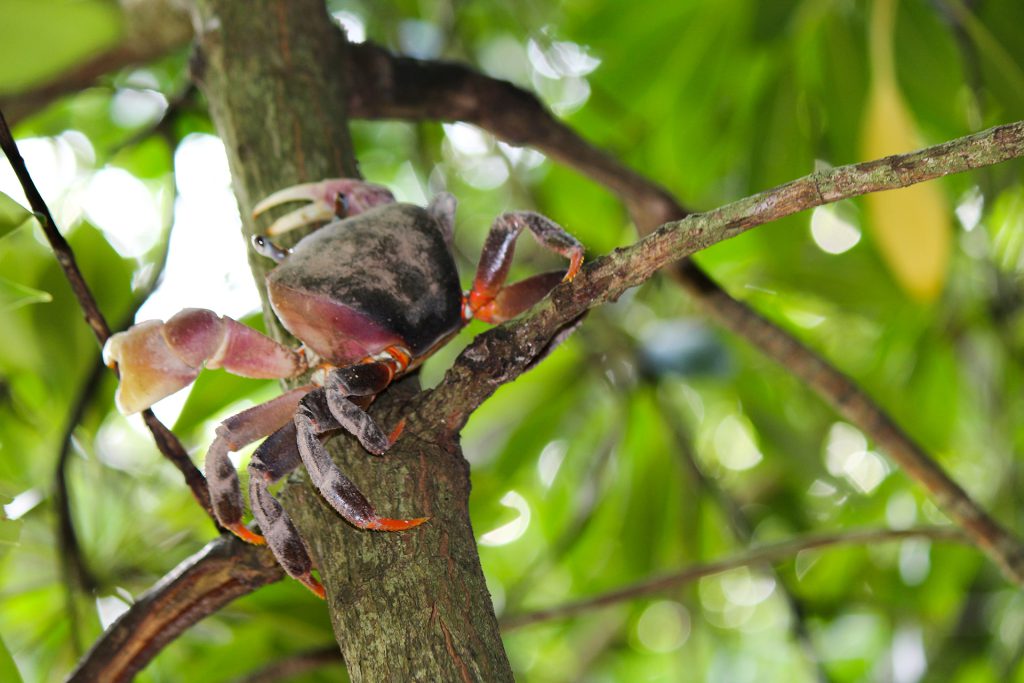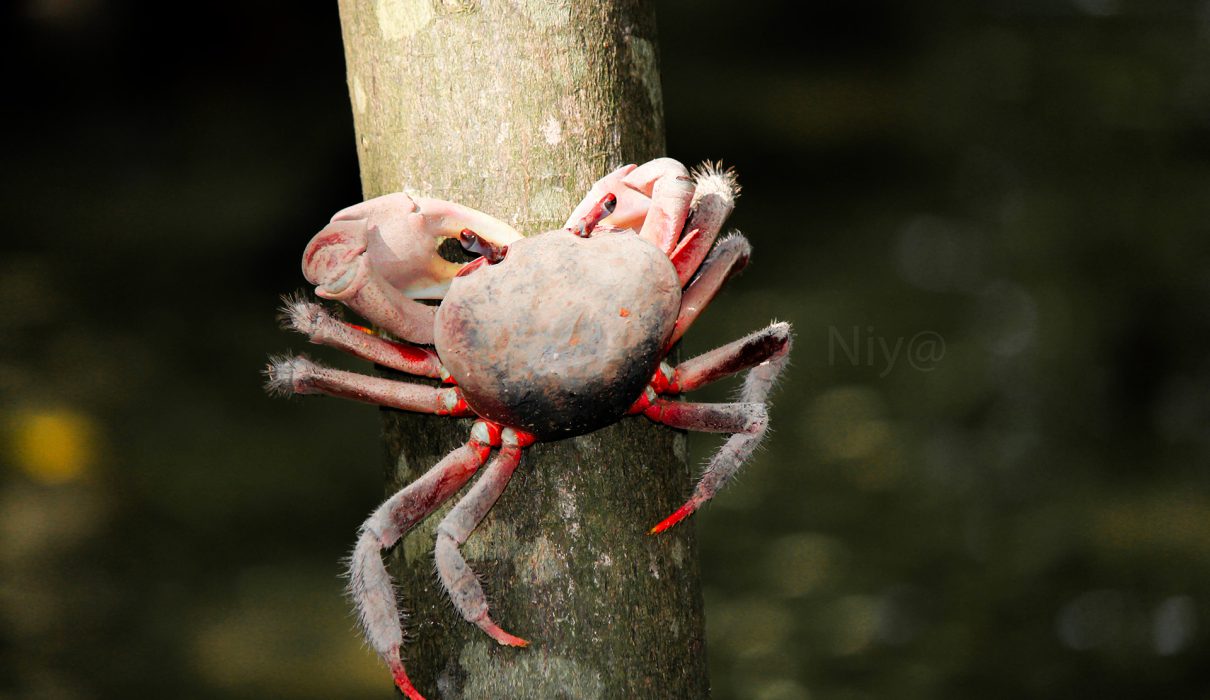Mangrove crabs, particularly the Cardisoma carnifex species, have intrigued observers with their fascinating behavior of climbing trees. Locally known as “kandoo kakuni” in the Maldives, these crabs, being the largest in the region, display a unique tree-climbing habit. Let’s explore the reasons behind this behavior in the mangrove areas of the Maldives.
1. Predator Avoidance Behavior: A primary motivation for the tree-climbing behavior is likely related to avoiding predators. Observations from mangrove areas, like Kaafu Atoll Huraa, reveal that these crabs ascend trees during high tide. This strategic move helps them clear the water level, reducing vulnerability to aquatic predators such as fish and other crabs.

2. Motionless Defense: Once on tree trunks, leaves, or boardwalk legs, Cardisoma carnifex adopts a motionless stance as a defense strategy. This behavior minimizes movement, serving to evade detection and predation by potential threats like kingfishers, monitor lizards, and otters.
3. Daytime Observation: A captivating aspect of these tree-climbing crabs is their heightened visibility during daylight hours. Locations like the boardwalk at Sungei Buloh Nature Park offer a prime vantage point to witness this behavior during high tide. Notably, during the day, the crabs climb just enough to clear the water level and remain motionless on various surfaces.
4. Habitat Dynamics: The inclination of mangrove crabs to climb trees is intricately linked to the specific conditions of their habitat. Research indicates that mangrove crabs, as a group, commonly exhibit tree-climbing behavior. While the exact species may vary, including the Cardisoma carnifex, this behavior extends to other crabs found in mangrove ecosystems.
Insights from Research: Understanding the motivations behind tree-climbing behaviors provides valuable insights into the ecology of mangrove ecosystems. This behavior isn’t unique to the Maldives; it’s observed globally. For further exploration, you can refer to a resource from WildSingapore that delves into the phenomenon of tree-climbing crabs, shedding light on the universal aspects of crab behavior: Link.
As we unravel the distinctive behaviors of Cardisoma carnifex and its counterparts worldwide, we gain a deeper appreciation for the intricate ways in which these species adapt to their environments within the rich tapestry of mangrove ecosystems.


